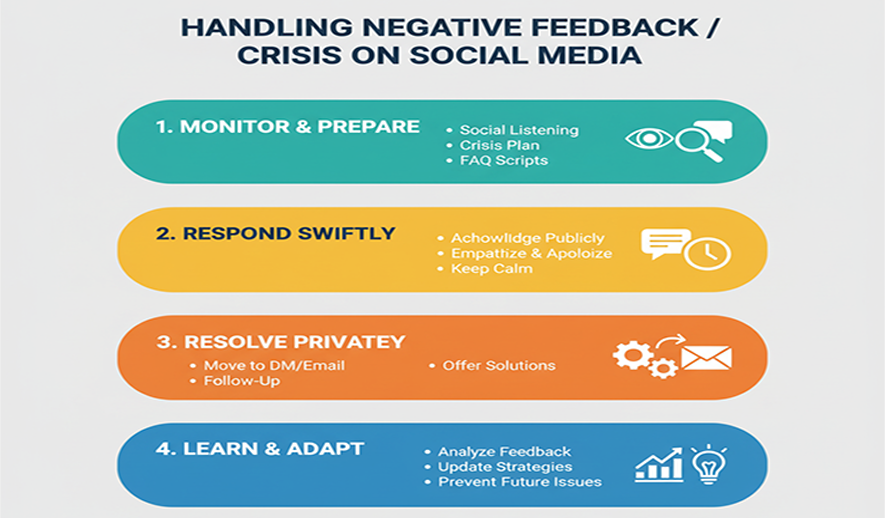
Handling Negative Feedback / Crisis on Social Media
When negative feedback or a crisis emerges on social media, a swift, empathetic, and strategic response is crucial for managing your brand's reputation. Having a clear, pre-defined crisis communication plan is the most effective way to navigate such situations calmly and effectively.
The essentials of handling negative feedback
Before a crisis starts
1. Create social media guidelines. Establish clear rules for how your team should respond to feedback. The guidelines should cover tone of voice, response timing, and criteria for escalating a situation. It is also wise to specify which types of comments—like threats or abuse—should be deleted.
2. Use social listening tools. Employ social listening to continuously monitor online conversations for brand mentions and sentiment. This allows you to catch negative feedback and potential issues before they escalate into a full-blown crisis.
3. Prepare holding statements. Draft pre-approved "holding" statements for different scenarios, such as product issues or service outages. These can be used to acknowledge a problem quickly and buy your team time to gather all the facts.
4. Set up an internal alert system. Designate a crisis management team and create a tiered escalation plan for different scenarios. Ensure your team knows who to contact and what procedures to follow when an issue arises.
During a crisis
1. Stay calm and act quickly. Negative feedback can be distressing, but responding emotionally will only make it worse. Acknowledge the issue publicly and promptly—ideally within an hour—to show you are attentive and committed to resolving it.
2. Pause scheduled content. Stop all scheduled posts that might seem insensitive or tone-deaf in light of the crisis.
3. Acknowledge and show empathy. When responding, express genuine concern and understanding, even if the user is being rude. A simple apology for their negative experience can go a long way.
4. Take the conversation offline. For sensitive or complex issues, publicly state that you are moving the conversation to a private channel, such as a direct message (DM) or email. This protects the user's privacy and prevents the public comment thread from escalating.
5. Offer a solution. If possible, provide a concrete solution or an apology, and follow up to ensure the customer is satisfied with the outcome.
Do not delete negative feedback. Unless a comment is abusive or violates platform guidelines, do not delete it. Deleting comments can make your brand appear untrustworthy. Respond to the criticism transparently to show that you value customer input.
